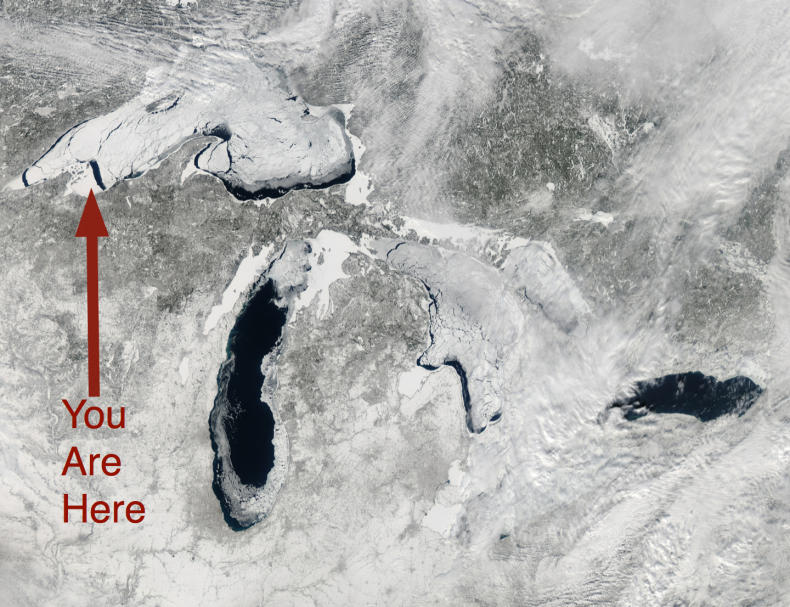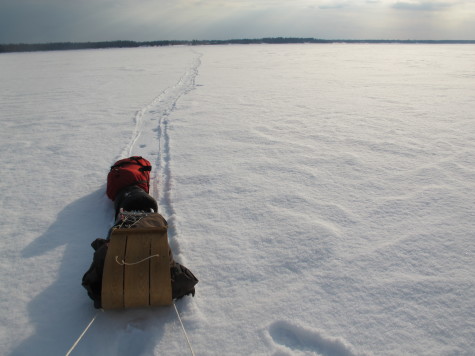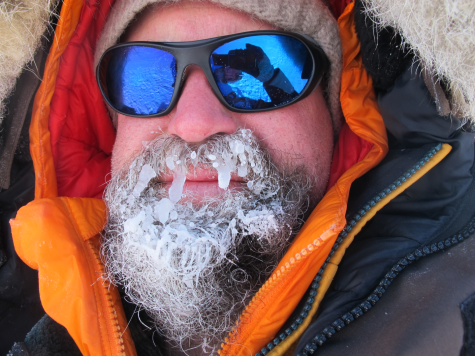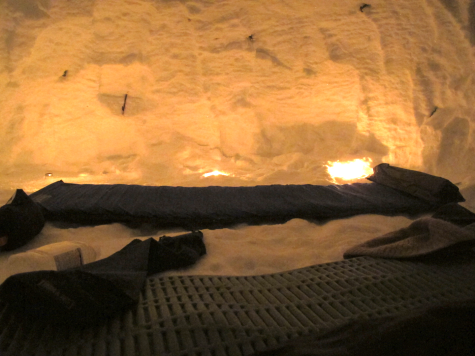This post ran in 2015, and it remains the coldest experience in my life. Put on something warm and enjoy.
In the winter of 2014, most of North America was buried in an unusual cold period. The jet stream had hemorrhaged in early January and the Polar Vortex that usually sits atop the hemisphere like a halo came pouring down. Known as the 2014 North American Cold Wave, temperatures plummeted, particularly in the Northeast and Upper Midwest where double digits below 0 °F appeared for weeks. Lake Superior froze more solidly than it had in decades.
That’s when I went to the Superior shore of northern Wisconsin where nearby temperatures had reached -37 °F. If I wanted to get the feel of a cold spell, I figured this was my moment. At the time, I was writing about the Younger Dryas, a cold anomaly that hit the Northern Hemisphere 12,800 years ago and continued for a thousand years. The world at that point had been gradually warming, the Ice Age coming to an end. Suddenly, within the space of a decade, ocean currents reversed in the Atlantic, probably triggered by cold, meltwater flows coming off the shrinking Laurentide Ice Sheet. This reversal sent the world back into the Ice Age, and brought the end of the Clovis tradition in North America, the climate upheaval speeding up megafauna extinctions.
I don’t like writing about events without witnessing them, so I set off across frozen Lake Superior out of Ashland, Wisconsin, pulling a sled behind me with enough gear to last several days. I wanted a taste of the Younger Dryas.
The Polar Vortex event in 2014 was a miniature version of the Younger Dryas, the best analog I could find. Rather than lasting a thousand years, it continued for the remainder of winter and into spring, the Great Lakes remaining partially frozen into April.
This cold wave was the result of sudden stratospheric warming that began on January 2, 2014. Winds in the stratosphere reversed direction, becoming easterly near the Arctic Circle. This change in direction disrupted polar winds, sending them down across southern Canada and the United States.
Winds and a blustery snow came out of the northwest across the frozen waste of Lake Superior. Afternoon air temperature was -10 °F. I had marched about six miles with my sled when the dithering squalls blew off and the sky opened wide. It was late in the day, and I decided to set my first camp.
I wasn’t actually in contact with the ice. The surface of the lake was drifted with crusty snow. A crescent moon resolved in the west as the last light faded. Buried in more layers than I could count, the ruff of my anorak pulled around my face, I watched the sky fill with stars, temperature dropping to -20 °F.
I didn’t have a tent. I was going bare bones, Pleistocene style, or at least what I thought was Pleistocene style. Paleolithic stone tools had been found in the nearby Boundary Waters in Minnesota. Dating to 12,000 years ago, these tools put people here smack in the Younger Dryas. I figured our bodies haven’t changed that much since then. If Stone Age foragers were in the area for that cold spell, I could be here for this one.
It turned out to be one of the worst nights I have ever experienced, frigid and uncomfortable. Any colder and I’d have lost digits. I was clearly the dumb Holocene guy trying out the Ice Age.
In the morning, it took an hour for me to break ice from around the zippers on my sleeping bag, and then the bivvy-shell encased around that. I emerged into clear morning sunlight which was, to my disappointment, not warm at all. Having not slept even once that night, I was grumpy and yelled at my tools. It took 45 minutes to work up enough hand warmth to assemble the stove, and another ten minutes of gloves on, gloves off, to ignite chilled liquid fuel.
A second night would not have been worth it. I pulled the plug on the journey across the lake and retreated to shore. By dark I reached a snow shelter I had built with students from nearby Northland College a couple days earlier. We had piled up snow, stomped it down, and hollowed out a spacious chamber inside. The entrance way a narrow passage dropping below floor-level to keep the cold out. I slithered in, pushing gear ahead, the cone of my headlamp shining across a smooth, snow-packed floor. The students had left tea candles from when they spent the night. Soon I had a circle of small, flickering flames around me. The inside of the white, silent shelter glowed.
Over the next hour, my thermometer went up to -10 °F, almost balmy. Zippers undone, coats opened, hats pulled off, I wondered how many people waited out the Younger Dryas in similar fashion. How many of the first people breathed under the snow, stone or shell lamps filled with animal fat letting warmth into their spaces?
When the last candle finally sputtered out, the space became as dark as the inside of a clam shell buried in winter mud. I crawled into my bag where I fell into one of the deepest, soundest sleeps I will ever have, the cold settling hard outside.
Photos: NASA, Craig Childs




Reminded me of a couple nights winter camping when I was young and dumb, in college. The first night we camped at a small campground near Eagle River, Wisconsin. We tramped into the site, packed the snow down as best we could with our skis and set up a couple tents. Then back to the car to heat up a couple cans of Chef Boyarde whatever. It was cold. Well below zero F. As the tomatoie pasta was boiling at the bottom of the pot, it was freezing over on top. Mixing only resulted in a mix of hot and icy round noodles. We gulped it down and began to dread going to the tents. At that point a group of ice fisherman from Nielsville pulled up with their pop-up camper, which had a heater. They saw us and took pity, inviting us in to toast the cold with endless brandy old fashions. Around 1am we decided it was time to find the tents, if we could, and crawl into sleeping bags for the night. Fortunately I was with my girlfriend and we snuggled into two sleeping bags, one inside the other, wearing everything we had and fell asleep listening to the booms of spruce trees exploding from freezing sap and the ceasless cracking and groaning of the ice on the lake. We were still cold. Next morning we got up and broke camp in a hurry and drove through the deserted streets of Eagle River as the sun rose. The bank thermometer read -37°. The next night we camped right on. the shores of Lake Superior and the temperature was a balmy 25° above. Tee shirt weather. Thats when we realised that the full bottle of tawny port in the back of my Dads car had frozen solid the night before, poping the cork and spewing winey slush onto the floor carpet. The car always had a faint aroma of sweet port wine after that, a reminder of cold nights in the north country. My Dad did forgive me eventually, after he got his new car.